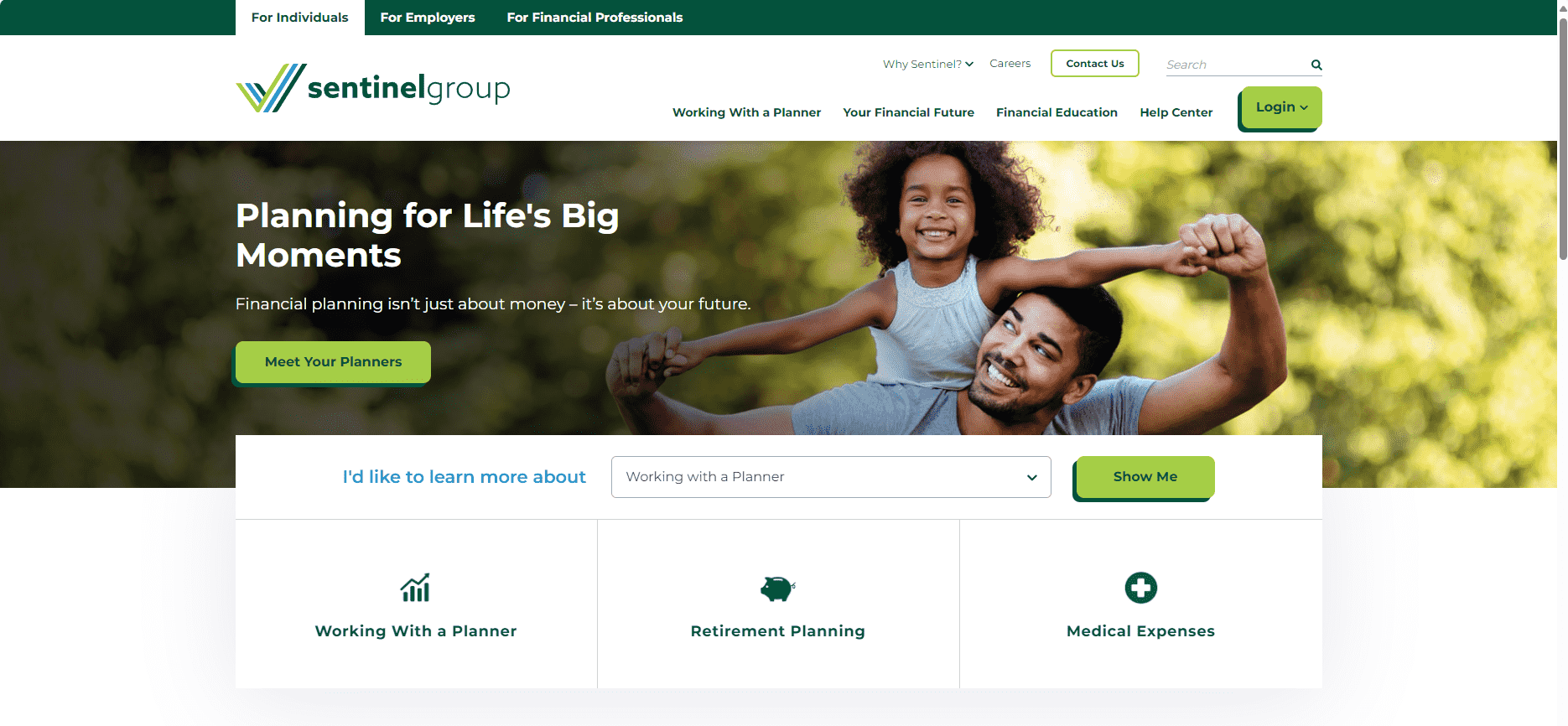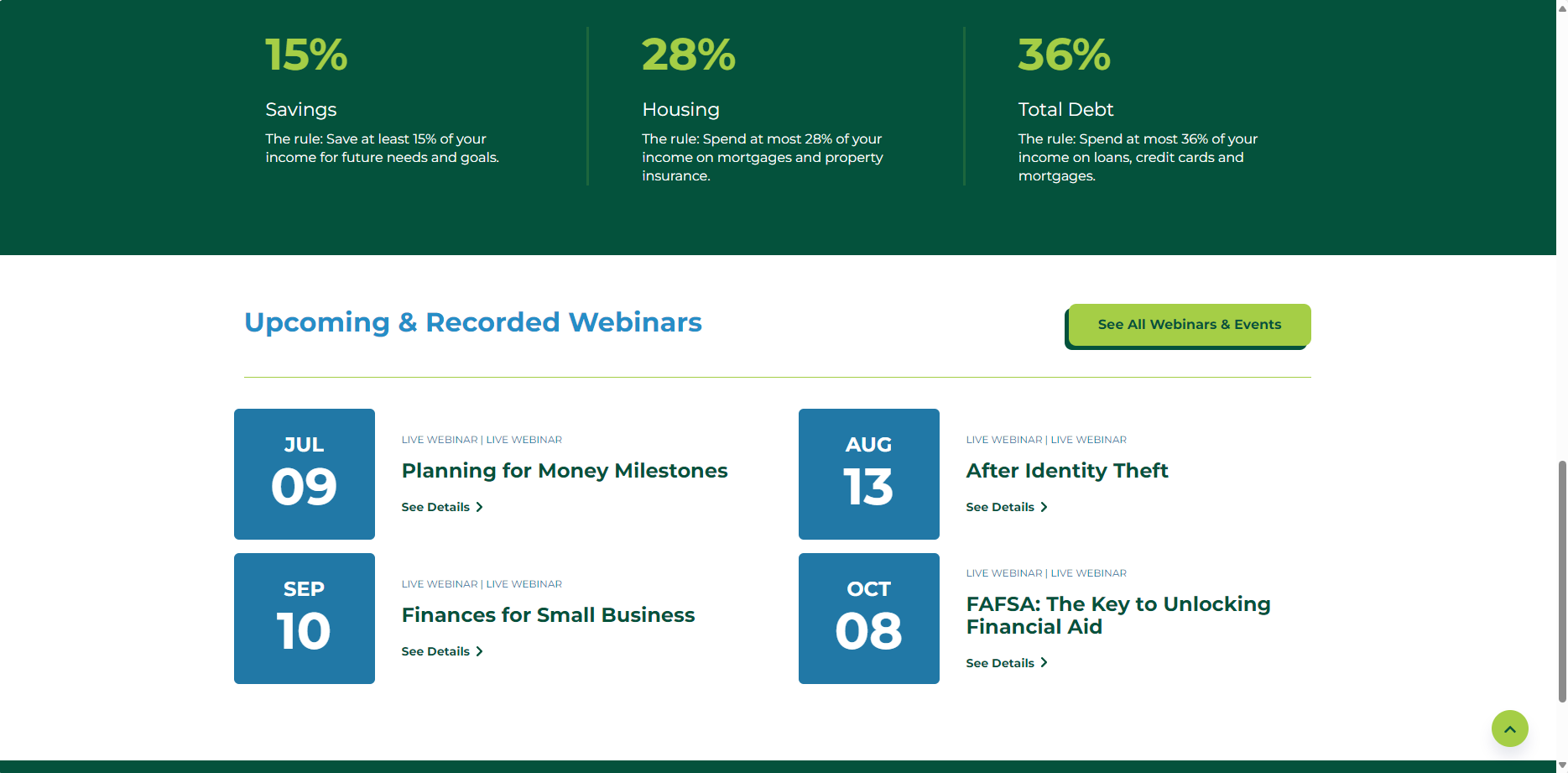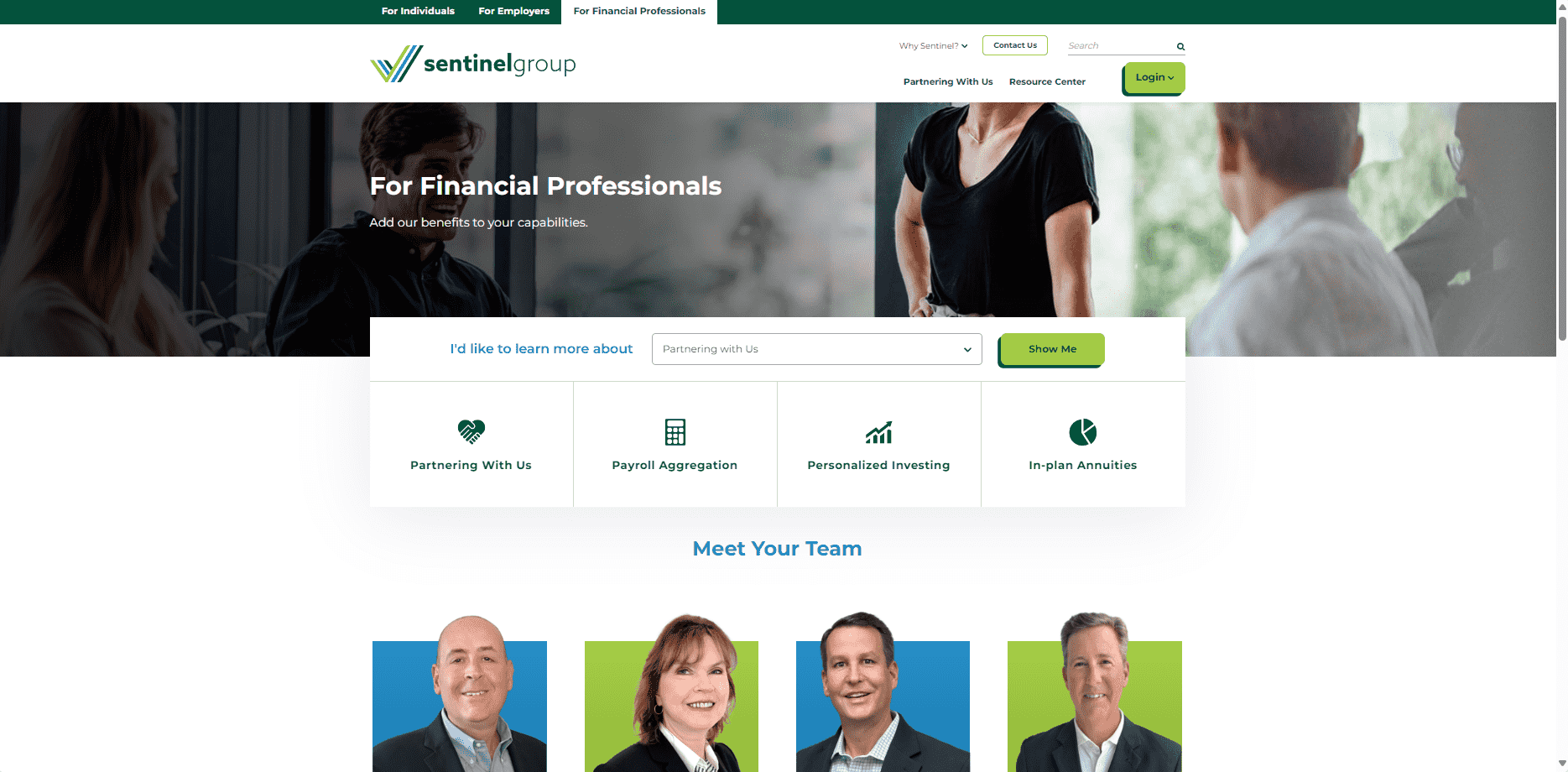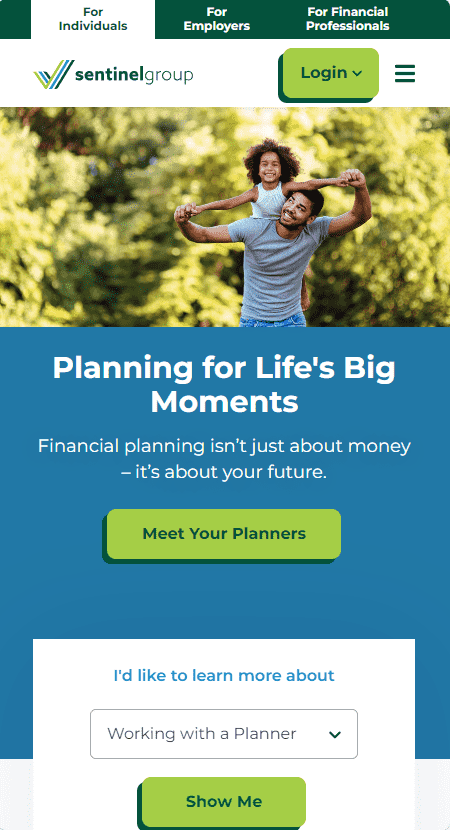SENTINEL
Services we provide:
- Discovery
- Strategy
- UX/UI design
- Website development
- Kentico implementation
About Sentinel
Sentinel is one of the largest employee benefits providers in the Northeast with 4,000+ clients and more than 250,000 plan participants. Sentinel partnered with SilverTech for their website redesign to accentuate their competitive advantages to other providers and strengthen brand messaging and company culture online. Additionally, they wanted to highlight Sentinel as a one-stop-shop benefits provider for employers and employees. Sentinel sought SilverTech’s expertise to create an experience geared towards the individual including storytelling elements through iconography, lifestyle-type imagery, and testimonials on their website.
The Process
Sentinel chose SilverTech’s recommendation of Kentico for several reasons. What appealed most to them was the easy-to-use interface for content editors, the ability to tag content clearly and effectively for multiple user groups, varied ability levels/place in the sales funnel, and the platform’s marketing automation abilities. Since the main goal of this website redesign was to create lead generation, the power and customizable functionality of the Kentico CMS coupled with the easy-to-use personalization and marketing automation features was a no brainer for Sentinel.
The Challenges
SilverTech faced several challenges throughout working on this project. One of the pains of Sentinel’s old site was that the homepage was difficult to use, asking users to act before understanding who Sentinel is. The new website clearly communicates the Sentinel brand before asking users to act. Another challenge that SilverTech faced was placing educational materials and related resources in a location and manner on the website that would be the most beneficial to users. This would make it easy for users to find information on their own and eliminate the need for Sentinel to send users direct links to the information. Sentinel loves the new website and SilverTech was able to address all the challenges of the old website.
RESULTS
Understanding Digital Terminology
5/12/21
Stay in the loop with the most popular digital technology terms in the industry
We’ve all been there. You’re sitting in a meeting or having a conversation with a colleague when they suddenly drop an acronym you don’t know in the conversation. You nervously play it off like you know exactly what they're talking about and immediately Google it once they walk away.
When talking about topics surrounding digital technologies, it can feel like everyone is speaking a different language with the large number of acronyms and nicknames used daily. But what used to be an awkward and confusing interaction, no longer has to be. We have complied a list of the most popular acronyms used in digital marketing so you can stay in the loop and on top of the trends. Check them out below!
Content Management System (CMS)
Content management systems enable web developers to manage content on their website, without having to know any code or programming language. A CMS typically includes features like managing pages, blog posts, images and videos; creating landing pages and lead capture forms; building product catalogs and e-commerce stores with checkout process flows; and more.
Digital Experience Platform (DXP)
Gartner defines a DXP as "an integrated and cohesive piece of technology designed to enable composition, management, delivery and optimization of contextualized digital experiences across multi-experience customer journeys." This means you can take the best from CMS or WEM platforms with deeper integrations that come within an all-in-one experience.
Digital Experience (DX)
The digital experience, sometimes referred to as the digital user-experience (DUX), is that feeling an end user takes away with them after a positive or negative interaction in a digital environment, usually based off the design and content they can interact with on their mobile device.
User Experience (UX)
The user experience is the user’s interaction with your services, products, and brand. A good user experience should result in increased customers, loyalty and most importantly sales. The best digital experiences are those that come from focusing on the users. Who are they? What do they like? Is the experience consistent across all digital platforms? If you are a marketer, you should be asking these questions.
The user experience also involves the user journey. The user journey is the step-by-step process the user takes to reach their goal. This usually involves the number of website pages that are visited and the decision points prior to meeting the goal. For some websites the goal is to fill out a form and for others the end goal is to make a purchase.
Web Experience (WX)
Similar to the user experience, the web experience is the use of skills needed to carryout activities on the web. This can involve searching for information, interacting with sellers, making decisions, and purchasing products. A web experience platform delivers a different experience for every visitor based off data which is used to personalize the UX.
Personalization is the act of tailoring an experience or communication based on information a company has learned about an individual. The web experience uses what companies learn about their prospects and customers to give them the best UX.
Enterprise Content Management System (ECM)
The Enterprise Content Management system is a combination of the strategies, processes, and tools used to capture, manage, preserve, store and deliver content/information to customers, employees, and stakeholders.
Web Content Management System (WCM) or Web Experience Management (WEM)
The social web has become more powerful than ever before, but with this booming popularity came a need to change the CMS. This new "Web Experience Management" provides personalized and user-friendly websites that are better for business integration as well.
Digital Asset Management (DAM)
Digital asset management (DAM) offers an effective solution for enterprises to store, organize, find, retrieve, maintain and share digital content. The DAM is quick to deploy and easy-to-use, often automated. It is a centralized digital library providing controlled access to digital assets including images, photos, creative files, video, audio, presentations, documents and more.
Employee Experience Platform (EXP)
With an Employee Experience Platform, employers are able to customize the look and feel of their employee experience program. By taking control over these aspects without actually replacing your HCM application or ATS, you can create a personalized digital workplace for staff members that is accessible, simple and easy to use.
Don’t have the time to keep up with the growing list of acronyms surrounding digital marketing? Partner with SilverTech and let our team of strategists, developers, designers and marketers do the heavy lifting for you. Contact us and learn more about what SilverTech can do for your business!




